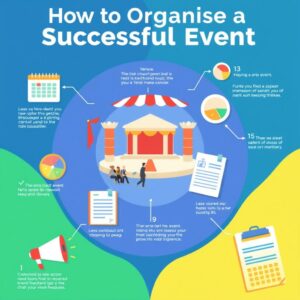Event Report Framework
I. Introduction
Event reports serve as a comprehensive record of an event’s proceedings, outcomes, and implications. Their primary purpose is to provide stakeholders with insights into the event’s effectiveness, enabling them to assess whether objectives were met, draw lessons for future events, and inform decision-making.
II. Pre-Event Planning
A. Define Objectives and Target Audience
1. Identify the specific goals of the event (e.g., information sharing, networking, fundraising).
2. Determine the characteristics and preferences of the target audience to tailor the event’s content and format effectively.
B. Research and Gather Information
1. Investigate related events to gather best practices and potential pitfalls.
2. Collect information on speakers, topics, and logistics to inform your report.
III. During the Event
A. Actively Participate and Take Notes
1. Engage with the content and speakers to capture insights and personal reflections.
2. Take detailed notes on presentations, discussions, and key interactions.
B. Capture Key Moments (Photos, Videos, Quotes)
1. Document significant moments visually and verbally to enrich the report.
2. Collect impactful quotes from speakers and attendees that illustrate the event’s themes and insights.
IV. Post-Event
A. Organize and Analyze Data
1. Compile notes, photos, and other materials to evaluate the event’s success and areas for improvement.
2. Analyze feedback from participants to gauge satisfaction and identify trends.
B. Structure the Report
1. Executive Summary: A brief overview of the event’s purpose, key outcomes, and relevance.
2. Event Overview: Details on the event format, agenda, speakers, and participant demographics.
3. Key Takeaways: Concise bullet points summarizing important insights and discussions.
4. Recommendations: Suggestions for future events based on observations and participant feedback.
C. Write Clearly and Concisely
1. Use straightforward language to ensure clarity for varying audiences.
2. Focus on delivering actionable information without unnecessary jargon.
V. Review and Polish
A. Proofread for Errors
1. Carefully check for grammatical mistakes, typos, and formatting inconsistencies.
2. Ensure that all names, titles, and data points are accurate and correctly represented.
B. Ensure Alignment with Objectives
1. Cross-reference the report with initial objectives to confirm that all key aspects are addressed.
2. Ensure that the report presents a coherent narrative that reflects the event’s outcomes and relevance to stakeholders.
This framework provides a structured approach to creating an effective event report that serves to inform, analyze, and improve future events.












